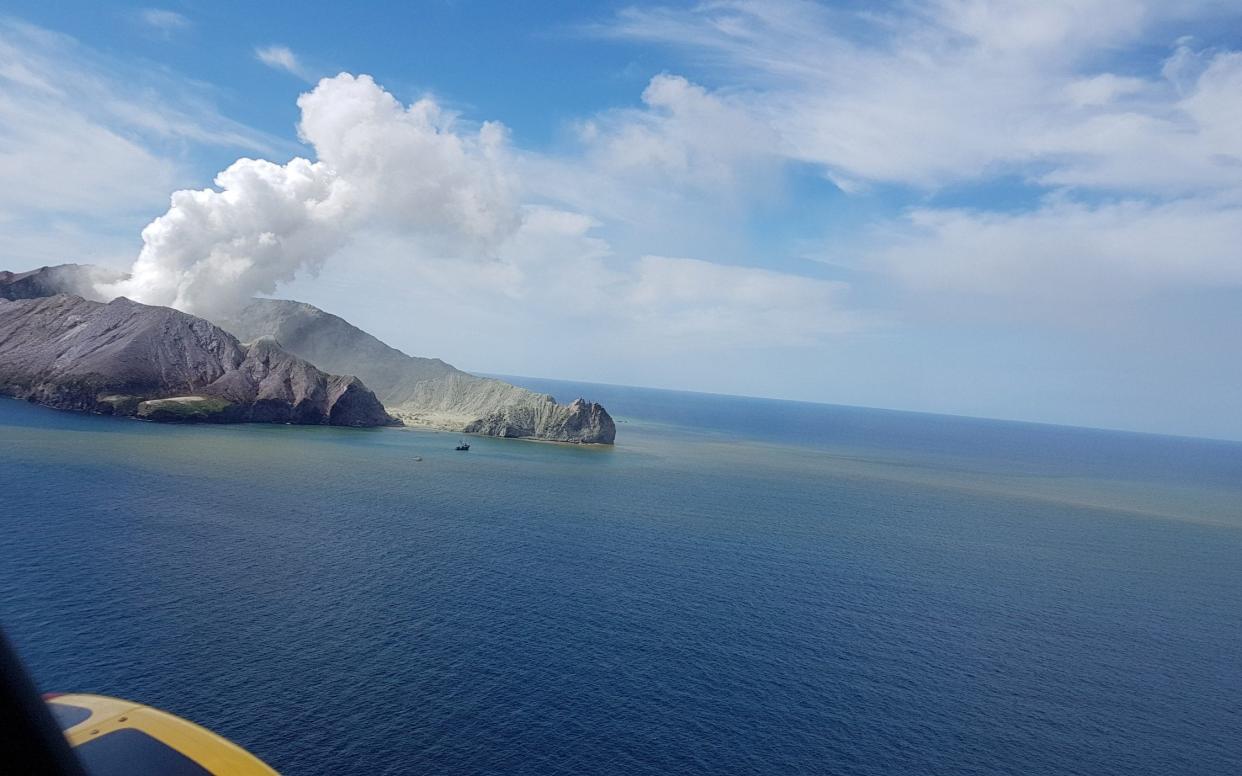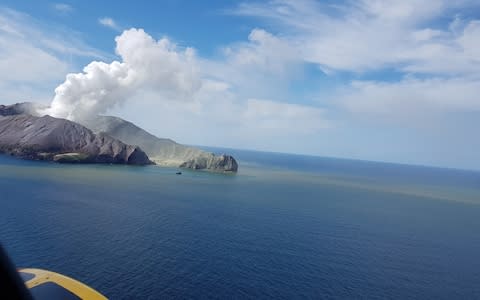New Zealand volcano: Fears of another major eruption stymie recovery efforts

Worsening conditions on a volcanic island in New Zealand have prevented authorities from recovering victims of a huge eruption that killed six people, left eight presumed dead and seriously injured 30.
Scientists have warned the chances of another eruption at Whakaari/White Island within the next 24 hours is growing.
At a media conference on Wednesday, Graham Leonard, senior volcanologist from GNS Science, said there was a 40 to 60% chance of another eruption within the next 24 hours, on the scale of that of Monday.
“There are environmental risks, it will be challenging to breathe and sea on the island… And there is the risk of another eruption,” he said.
“Tremors, seismic signals are escalating. Yesterday the risk was 30-50%. For reference, on October 29 it was 0-1%. The parameters are worsening.”
Two British women are among the 30 still being treated in hospitals around the country, with medics warning that many have suffered burns to more than 30 per cent of their bodies and are still in critical conditions.
British High Commissioner Laura Clarke confirmed earlier on Wednesday that staff were supporting the family members of the women. “We are supporting the family [and] . . will do all we can to help any other Brits who require our help.”
Counties Manukau Chief Medical Officer Dr Peter Watson said the chemical nature of the incident had complicated patient recovery.
"The nature of the burns suffered is complicated by the gases and chemicals in the eruption. This has necessitated more rapid treatment of these burns than is the case for thermal-only burns."
The official death toll after Monday's explosion on White Island climbed to six late on Tuesday when another victim died in hospital. The bodies of eight more people are believed to be on the island.
Sarah Stuart-Black, Director of New Zealand Civil Defence, said she had been “hopeful” that the bodies would be able to be recovered on Wednesday morning but the conditions were too dangerous.
“The Minister of Foreign Affairs and Trade are working on the identity and status of the foreign nationals involved, and have deployed a team to work with foreign diplomatic missions,” she added.
“Welfare services being coordinated through local services (who are) focused on providing support to the injured, and to the families of the victims.”

Ms Stuart-Black said families from other countries are expected to arrive in New Zealand from Wednesday and their applications for visas will be expedited.
“This is an utterly tragic situation. Retrieving the bodies is an absolute imperative… We recognise that and we are doing everything we can. I spoke to one of the families yesterday and they are devastated.
“I completely understand how important it is for them, however the prevention of further harm must be taken into account. The risk is too high at the moment, it is constantly being re-assessed,” she said.
Dr Ashley Bloomfield, Director General of Health, said the New Zealand’s national multiple complex burn action plan had been activated on Tuesday for the first time ever.
New Zealand’s national burns unit at Middlemore hospital is coordinating treatment across several sites, including clinical decisions on repatriation where possible.

Australian defence forces are repatriating a number of Australians, and one patient was being flown back to Sydney on Wednesday on a private flight.
Dr Bloomfield said some of the victims were initially unconscious and had no identification on them, but progress has been made since on identifying people.
Police Deputy Commissioner John Tims apologised for referring to a coronial investigation as a “criminal investigation” on Tuesday.
DC Tims reiterated that New Zealand’s occupational health and safety body, WorkSafe, was also investigating the situation.
The police drone did four fly-overs of the island on Wednesday and the footage was being analysed.
A mother and daughter, meanwhile, became the first Australians to be named as victims of the disaster after the family was informed by authorities early on Wednesday.
Brisbane woman Julie Richards, 47, and her daughter Jessica, 20, had been confirmed dead after Monday's explosion at White Island, family friend John Mickel said on the Sky News programme.
The two injured Britons were visiting the island alongside 24 people from Australia, nine from the US, five from New Zealand, four from Germany, two from China and one from Malaysia.
Dr Watson said staff were urgently sourcing supplies for dressings and skin grafts, the latter of which would be coming from the United States.
More than one million square centimetres (100 square metres) of skin would be required to provide skin grafts for the 30 surviving patients, he said.

